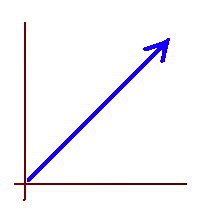Illustrating a not uncommon confusion
Recently, working with a student who was preparing for the Algebra portion of a test, we came across this problem about simplifying the radical expression 3*sqrt(27).
He factored 27 = 9*3, and he wrote
3*sqrt(27) = 3*sqrt(9*3) = 3*(sqrt(9)*sqrt(3)) = 3*(3*sqrt(3))
Then he paused, hesitated, stopped, and he silently looked at me, telling me with his look that he didn’t know what to do next, pointing his pencil to the parenthesis, and the multiplication inside the parenthesis.
I said: “Probably the problem here is not asking for decimals, maybe we can do this multiplication first”, and I wrote
9*sqrt(3)
Then he asked: “But, don’t you have to also multiply the first 3 times the sqrt(3), as well?”
At that point I saw his confusion. It was about the associative property of multiplication, and the distributive property of multiplication over addition.
He was thinking that because
a(b+c) = ab + ac
maybe then
a(bc) would have to equal ab*ac, instead of just (ab)c.
So I did a quick example with numbers. First I wrote:
2(3+5) = 6 + 10 = 16
and then
2*(3*5) = 2*15 = 30, to establish a firm reference.
Then, making explicit how the associative property works in this particular case, I wrote:
(2*3)*5 = 6*5 = 30
Finally, showing the mistake of trying to distribute multiplication over itself, I wrote:
(2*3)*(2*5) = 6*10 = 60 which is different from 30.
Looking at this example the student agreed that the first procedure (using the associative property of multiplication) gives the right answer, while the second (trying to distribute the multiplication symbol outside the parenthesis over the multiplication inside) doesn’t work. After having the formats clearly illustrated with whole numbers, I wrote them with variables, for him to see the difference in the abstract level.
In this particular instance, the confusion arose in the first place because of the square root symbol in the factor sqrt(3).
When a triple product a(bc) involves only whole numbers, students don’t have a problem with that. They just multiply the two numbers inside the parenthesis, and then multiply that product by the number outside the parenthesis. However, for many students, the presence of a radical makes the problem a little bit too abstract. They don’t have a ready answer for 3*sqrt(3), so they think: “I don’t know how to do that multiplication, so I don’t know how to do the problem,” or “That multiplication cannot be done without a calculator, so I have to apply some rule but I don’t know which one.” Once in the abstract realm of properties, formulas, and identities, their chances of getting lost increase dramatically.
This type of confusion is actually quite interesting. Students often fail to make a connection between variables and numbers. They seem to forget that variables stand for numbers. However, here the student was applying the connection in one way, from the abstract rule to the concrete example. The problem was the rule he was applying was made up. It is not a rule at all. It only seemed a rule to him because of its typographical similarity with the distributive property of multiplication over addition.
First, the presence of a radical disconnected him from the concrete, familiar realm of whole numbers. Then he went searching his memory banks for an algebra rule to apply. The first rule he remembered was the distributive property. At that point, an oversimplification drive took over, suggesting the idea that the typographically corresponding expression should be a rule as well. So he was considering adopting such a made-up rule as a real number property, without checking its validity with numerical examples before applying it but just going by the typographical similarity with the distributive property, effectively making him want to distribute multiplication over itself.




